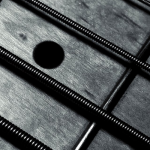Language
Alternate Bass Guitar Tunings
Most bass players begin with the frets on the strings. Ascending frets will be applied meaning the fifth fret, without a capo, of the lower string of the bass guitar will be the same note (check your fingers on the frets) as the open next string. The fifth fret on your E string is your open A string. This is usually how the basic tunings go before you discover the alternate bass guitar tunings on your electric bass.
The fifth fret on your A string sounds the same as your D string. The fifth fret of your D string sounds the same as your G string. Harmonics are a way to single out the overtones in an open string. We can go to the twelfth fret. You can just let it rest right about the twelfth fret. Exploring the frets meant using harmonics instead of just the frets when experimenting with alternate bass guitar tunings. One trick is putting your finger on the seventh fret of the G string, the fifth fret on the D string to discover 2 different tunings producing the same note.
One of the most often used tuning apart from the G string/D string dynamic is the dropped D. It is tuning the E string down a full step to get a low D. An easy way to do that is by simply letting that D string hum out the sound (we give the twelfth fret off-Bart E string and just tune it down until it sounds like the low D. Don’t hesitate to loosen the strings in trying to get the right sound. It will help as long as the notes come out right.
There is also a method called the B flat tuning where you tune everything down half a step or half a fret, if you look at your fingers, on the electric bass guitar. Some professional guitarists call those frets alternately as steps. You end up learning how to play the notes E flat, D flat and G flat. It’s a deviation from the EADG basic dynamic. You can start playing that by getting to the fifth fret of your G string and pluck the fourth fret. Don’t forget to use your ears to check if the sounds matched the notes that you are expecting. So the cycle goes, harmonics-wise is one finger on the fifth fret of the G string, another finger on the fourth fret harmonic under D string. Playing continuously under these bass guitar settings would produce a G flat sound.
 Active And Passive Guitar And Bass Pickups Explained[/caption]
[caption id="attachment_7533" align="alignleft" width="150"]
Active And Passive Guitar And Bass Pickups Explained[/caption]
[caption id="attachment_7533" align="alignleft" width="150"] Ampeg BA-112 Combo Bass Amp Review[/caption]
[caption id="attachment_7108" align="alignleft" width="150"]
Ampeg BA-112 Combo Bass Amp Review[/caption]
[caption id="attachment_7108" align="alignleft" width="150"] Brand Spotlight: Genzler Bass Amps[/caption]
Brand Spotlight: Genzler Bass Amps[/caption]
Final Thoughts ...
The next time you feel a little bored with your bass or feel like experimenting, make sure to give one of these alternate tunings a try! You never know, they might end up sparking something you never knew you had in you!Your Turn to Sound Off!
How many facts did you already know from the five listed above?Let us know in the comment section below!
Other Stories You Might Like ...
[caption id="attachment_7797" align="alignleft" width="150"] Active And Passive Guitar And Bass Pickups Explained[/caption]
[caption id="attachment_7533" align="alignleft" width="150"]
Active And Passive Guitar And Bass Pickups Explained[/caption]
[caption id="attachment_7533" align="alignleft" width="150"] Ampeg BA-112 Combo Bass Amp Review[/caption]
[caption id="attachment_7108" align="alignleft" width="150"]
Ampeg BA-112 Combo Bass Amp Review[/caption]
[caption id="attachment_7108" align="alignleft" width="150"] Brand Spotlight: Genzler Bass Amps[/caption]
Brand Spotlight: Genzler Bass Amps[/caption]
